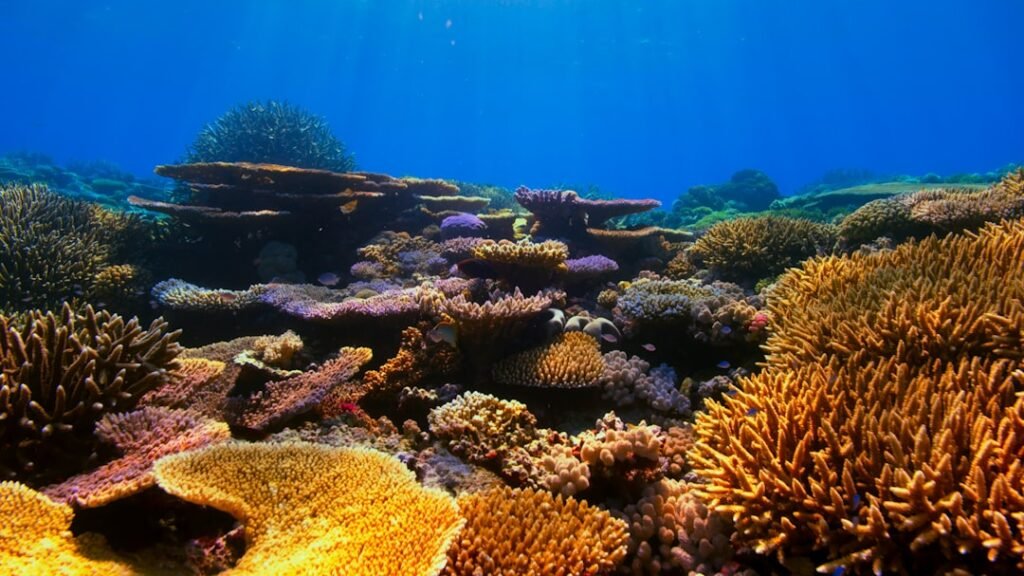At dawn over Mississippi’s barrier islands, dark-winged silhouettes skim the surf like quiet gliders, and for the first time in a long while, the air feels busy again. Brown pelicans – once pushed to the brink by toxins, oil, and relentless debris – are reclaiming the very sand spits that shaped their story. The twist is as simple as it is hard-won: methodical coastal cleanups are reopening nesting zones one trash bag at a time. Behind the scenes, scientists and volunteers are syncing efforts with tides, breeding calendars, and habitat models to give these birds a fair shot. The result is cautious optimism, the kind that arrives on broad wings and lands with a murmured thump in the dunes.
The Hidden Clues

You notice the comeback first in whispers, not headlines: a raft of pelicans rafted tight beyond the bar, a scatter of fish scales near a favored perch, the unmistakable whitewash on low shrubs where birds loaf between foraging runs. On a blustery spring morning, I joined a volunteer crew across a sweep of sand where the wind braided new dunes, and the only footprints were ours and a clumsy webbed trail veering toward the grass. There, we spotted the subtle architecture pelicans prefer – sheltered pockets behind wrack lines, and open sightlines so adults can spot threats before they settle to incubate.
These are not accidental habitats; they’re micro-landscapes curated by tide, storm, and human restraint. Remove tangles of monofilament, rusted trap frames, and splintered boards, and the sand begins to behave like sand again – shifting, seeding, holding. Pelicans, wary but opportunistic, take the hint when disturbance drops and cover returns. The signs build slowly: more birds staging, longer rests ashore, and finally, pairs squabbling over a patch of scrub that looked empty all winter. You learn to read it the way fishers read currents – a story written in ripples, tracks, and the sudden hush that means something big is near.
From Ancient Tools to Modern Science

Coastal science in Mississippi now blends old-school observation with tools that would have sounded like science fiction a decade ago. Field crews still keep the backbone – boots on sand, binoculars up, notebooks filling with tide times and flock counts. But drones map island contours after storms, giving biologists a near-real-time snapshot of where the next safe nesting pockets might emerge.
High-resolution imagery and machine-learning classifiers help spot colony clusters without walking through sensitive zones, trimming the risk of flushing incubating birds. Lightweight GPS tags, used sparingly and ethically, trace foraging loops to see whether nearby waters can fuel hungry broods. Even environmental DNA pulled from nearshore water reveals which predators or competitors share the same surf line. The upshot is a smarter cleanup and restoration plan, tuned not just to what’s visible but to the rhythms pelicans actually follow.
The Cleanup Pivot

Not all litter is equal in a seabird’s world, and that realization changed the game. Crews now prioritize hazards that can ensnare wings or entangle nestlings – monofilament, balloon ribbon, and derelict trap mesh – before broader debris sweeps. Clearing those traps out of likely nesting arcs can be the difference between a colony that forms and one that scatters.
Timing is everything: targeted cleanups surge just before the breeding window, reducing disturbance when pairs are deciding where to settle. Access routes are rerouted to keep foot traffic downwind and out of sight, and volunteers get rapid training on avoiding dune vegetation that anchors future shelter. The strategy sounds simple, but it’s surgical, balancing what must be removed with what must remain as windbreak, camouflage, and shade. When it works, you can feel a coastline exhale.
After the Spill, A Long Climb Back

The 2010 oil spill left a bruise that the Gulf still carries, and pelicans wore that story on their feathers. In Mississippi, the response has stretched across years: habitat repairs, living shorelines, and cautious replanting to anchor sand that storms kept unzipping. Cleanups became part of that recovery arc, not just a cosmetic fix but a way to make new growth possible.
Restoration teams learned that bare, debris-littered sand was a magnet for failure – too open to wind, too inviting to predators, and too risky for adult birds to commit. By clearing hazards and letting native plants stabilize the ground, nest microclimates improved in subtle ways: cooler surfaces, better cover from gusts, and fewer tripwires for frightened birds. Add buffers that keep crowds and pets at bay, and the calculus changes from survival on the edge to a fair chance at raising chicks. It’s not a miracle; it’s the slow accumulation of better choices.
Why It Matters

Pelicans tell us when a coast is functioning, because they need a chain of things to go right – baitfish schools close to shore, safe roosts, breathing room on land, and clean air. Lose one link and the whole chain strains, often in ways people feel too: fewer catchable fish near the beach, eroding dunes, and closed access after storms. When pelicans pick a place to nest, it’s a vote of confidence in the neighborhood.
There’s also the human pulse: coastal towns draw energy from wildlife that’s visible and dramatic, and few sights beat a tight V of pelicans surfing a breaker. Small businesses – from bait shops to eco-tours – benefit when living shorelines are truly living. And in classrooms, a pelican’s arc over the water turns food webs from abstract diagrams into something unforgettable. By rescuing their nesting grounds, we’re not only mending a bird’s lifecycle; we’re shoring up the identity of a coast.
Global Perspectives

Around the world, seabirds crash or rebound on the strength of simple interventions executed well, and Mississippi is part of that wider chorus. Island-nesting species from terns to gannets face a similar mix of threats: rising seas, heat waves, and the silent menace of plastic that turns a safe scrape into a trap. Where beach cleanups align with habitat design – think low fencing, vegetated hummocks, and quiet zones – colonies stabilize.
The lesson travels: clear the lethal debris, dial down disturbance, and match restoration to local wind and wave patterns. In return, seabirds offer a barometer with immediate feedback you can literally count from shore. Mississippi’s experience shows that even after a deep setback, iterative, place-based care works. That example matters for coasts weighing what to fix first with limited time and funding.
The Future Landscape

Hurricanes will keep testing the blueprint, pushing sand into new shapes and daring us to adapt as fast as the islands do. Sea-level rise adds a slow, relentless squeeze, forcing colonies to leapfrog to higher ridges or newly created spits after each storm season. The next phase of protection will rely on agile mapping and quick-response crews that can clear hazards and reroute access in days, not months.
Biodegradable fishing gear and expanded monofilament recycling could cut the most dangerous snags before they ever hit the beach. Smarter breakwaters and dune plantings can calm wave energy without boxing wildlife out. And predictive models that blend wind records, storm tracks, and food availability will guide where to focus the next cleanup before pelicans arrive. The future here isn’t high drama – it’s choreography.
The Hidden Economics

Clean beaches look like a luxury until you tally what chaos costs. Emergency rescues, closed shorelines, and post-storm debris pushes are far more expensive than steady, preventive care. By front-loading effort in the months before nesting, managers reduce the odds of costly failures during incubation, when disturbance packs the worst punch.
Tourism thrives on two things Mississippi has in spades when restoration hums: compelling wildlife and accessible, safe shores. A coastline that regularly hosts pelican colonies becomes an anchor for seasonal businesses and community pride. The dividends flow quietly, in booked rooms, bait receipts, and kids who grow up knowing the difference between a gull’s cry and a pelican’s wingbeat. That’s an economy built on resilience rather than repairs.
Conclusion

If you live within striking distance of the Gulf, the first step is wonderfully ordinary: join a cleanup timed before nesting season and follow the guidelines to the letter. Pack out every strand of line or ribbon you find, and leave natural drift that shields nests from wind. Keep dogs leashed near dunes, give resting birds a wide berth, and use spotting scopes instead of walking closer for a photo.
If you’re farther away, you still have reach. Support groups that equip monofilament recycling stations, fund debris surveys, and train rapid-response volunteers after storms. Ask your local tackle shop to carry biodegradable alternatives, and treat beach access as a privilege with responsibilities attached. Most of all, pay attention – because noticing is how restoration starts.

Suhail Ahmed is a passionate digital professional and nature enthusiast with over 8 years of experience in content strategy, SEO, web development, and digital operations. Alongside his freelance journey, Suhail actively contributes to nature and wildlife platforms like Discover Wildlife, where he channels his curiosity for the planet into engaging, educational storytelling.
With a strong background in managing digital ecosystems — from ecommerce stores and WordPress websites to social media and automation — Suhail merges technical precision with creative insight. His content reflects a rare balance: SEO-friendly yet deeply human, data-informed yet emotionally resonant.
Driven by a love for discovery and storytelling, Suhail believes in using digital platforms to amplify causes that matter — especially those protecting Earth’s biodiversity and inspiring sustainable living. Whether he’s managing online projects or crafting wildlife content, his goal remains the same: to inform, inspire, and leave a positive digital footprint.




